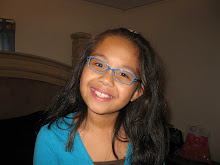Thursday, August 27, 2009
First of all are guides to all Dog.
THE ORGINS OF BREEDS
THE ORGINS OF BREEDS
What sets the dog apart from all other domestic animals is the way it has adapted, in terms of it's association with us. Dogs have performed a very wide range of roles through history, mirroring the changes that have taken place in human society don through the millennia, and have been bred to fit these different niches. This is an ongoing process, as reflected by growing number of so-called "designer dogs"now being created.
HUNTERS AND GUARDIANS
At the outset, dogs were kept as hunting companions, helping to provide food, in addition to acting as guardians around settlements. Then once agriculture started to develop, dogs were used to herd and guard livestock. Their role as hunting companions continued to diversely, and when shooting became a fashionable pastime in the 1800s, breeds of the dog were created specially as gundogs. It is the adaptability of the dog that has seen their skills being used in a wide range of different activities. The most significant change to date started in the late 1800s. The increasing mechanization that was taking place in Europe and North America gave many people more leisure time and greater wealth, as reflected by a growing middle class. this was time of evolutionary theory, and people were embarking on selective breeding of the wide range of plants and animals, which became as known "fancying" the results of such endeavors were seen at shows. SPANIEL Extremely versatile and generally friendly, working spaniels track down prey and flush it out for waiting hunters. They then use scent to find the fallen quarry to retrieve it.
THE SHOW SCENE
Up until this stage, there had been no breeds as such but, rather, dogs had developed recognizable characteristics linked to their work. The breed concept of today arose in conjunction with the show scene.Dogs are categorized at shows according to a clear format. The breeds are divided up into different breed groups, such as hounds, that reflect their origins. Then within each breed division, there will be various "class" depending on the size of the show and its popularity. Class winners compete for the best of breed title, and each of these then progress to best in group. Finally, these winners compete for the best in show award, each being judged against their individual breed standard.
.....to be continued
Subscribe to:
Post Comments (Atom)

0 comments:
Post a Comment